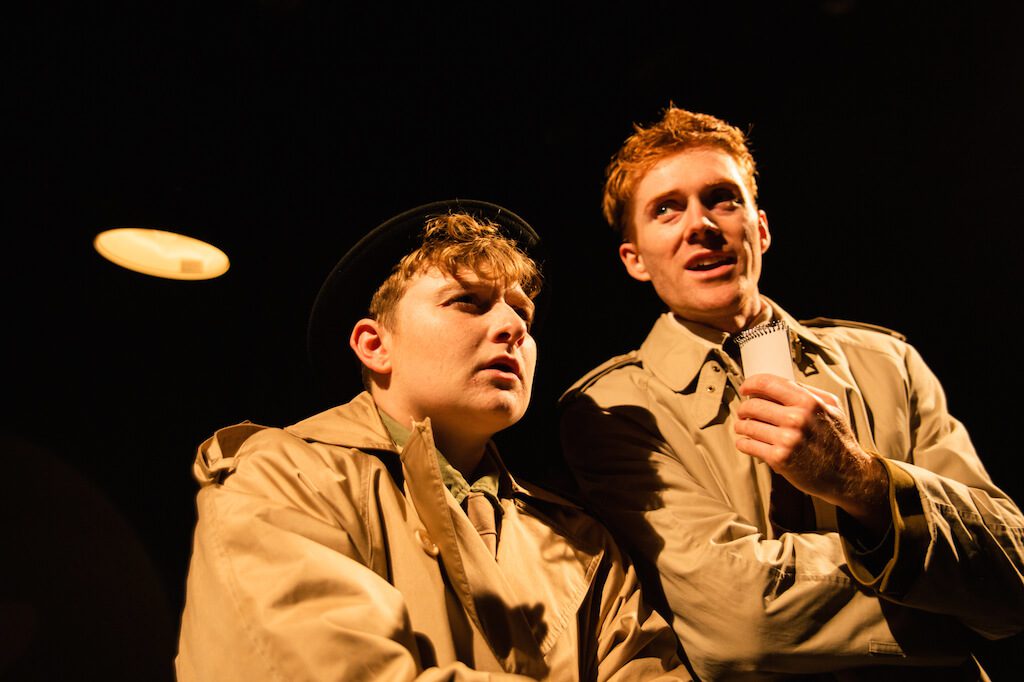The Finborough Theatre continues its remarkable remit of presenting only work which has not been seen in London during the last 25 years. In this case they excelled themselves with a performance of The Coral by Georg Kaiser, first seen in Munich in 1917 and not performed in the UK for a century. Kaiser was a leader in the German Expressionist movement so it is not surprising that the action is not intended to be realistic so much as to point to a deeper reality through the use of archetypes and poetic language. Expressionism was challenging the older generation’s values which had developed through the growth of industry and culminated in the industrialised warfare of the First World War. The subject is just as applicable now, addressing the issue of the cost to workers of one man accumulating massive wealth.
The play centres on the Millionaire, a self-made man who rose from wretched poverty to a position of power in which his factory processes perpetuate misery for his workers. The Millionaire is played with strength and conviction by Stuart Laing. The Millionaire wears a red shirt, tie and socks, clearly establishing his image, but there is, throughout the play, another character dressed identically but with his face behind a red mask. This is the Millionaire’s doppelganger, the hidden self sent out to do the things the Millionaire does not want to do.
In the form of the Millionaire, the play grapples with key issues of free will and choice. Are people any more free than the machines they are working on? Is everything pre-determined? Can people free themselves from the expectations of their circumstances?
The heroine of the drama is the Millionaire’s daughter, given a strong performance by Joanne Marie Mason. She refuses to accept the wealth of her father and instead goes to work in the hold of one of his cargo ships called the Albatross. The Millionaire is infuriated but she challenges him to break free from the constraints of societal expectations.
The sparse Finborough stage is enlivened with an outstanding use of lighting and costumes in black, red and white, while actors perform stylised movements and express Kaiser’s prophetic words like characters from a Greek tragedy. There is a lack of circumstantial detail or characterisation outside the specific roles allotted to the actors such as ‘revolutionary’, ‘second daughter’ ‘police officer’ which makes this an unusual theatrical experience.
The second half of the play, set in an interrogation room and a prison yard, is less successful than the first. It works towards decoding the meaning of the coral brooch which the doppelganger wears to distinguish him from the Millionaire.
This is not an easy play or a comfortable one. It is as well to remember that The Coral was first staged in an autocratic Germany during a war which the nation was losing and one month before the Bolshevik revolution in Russia; its message was meant to be heard out loud.

